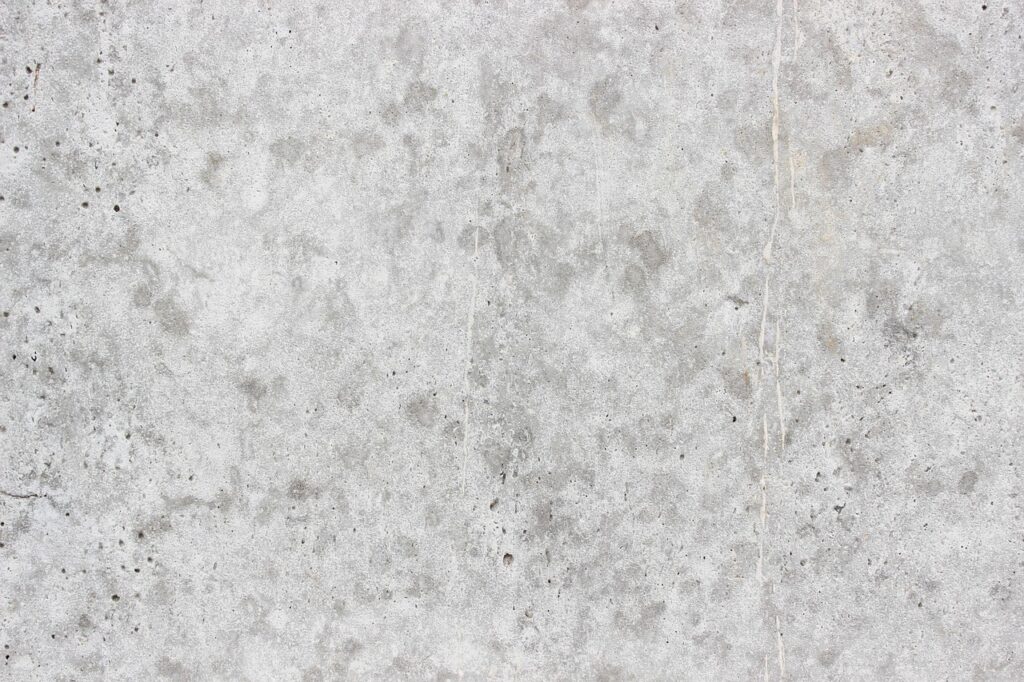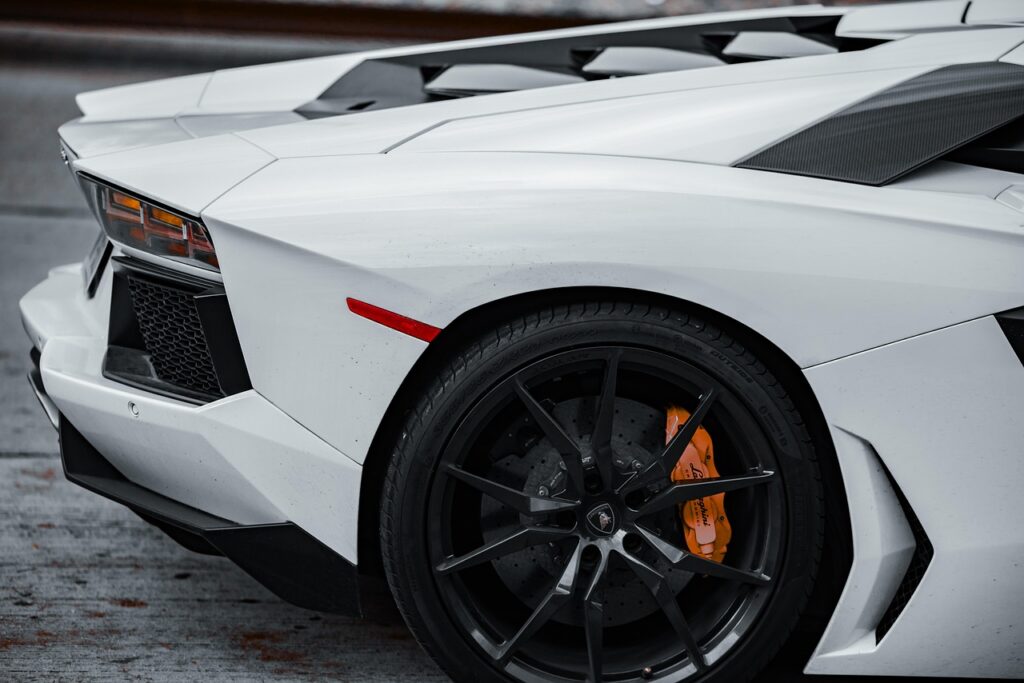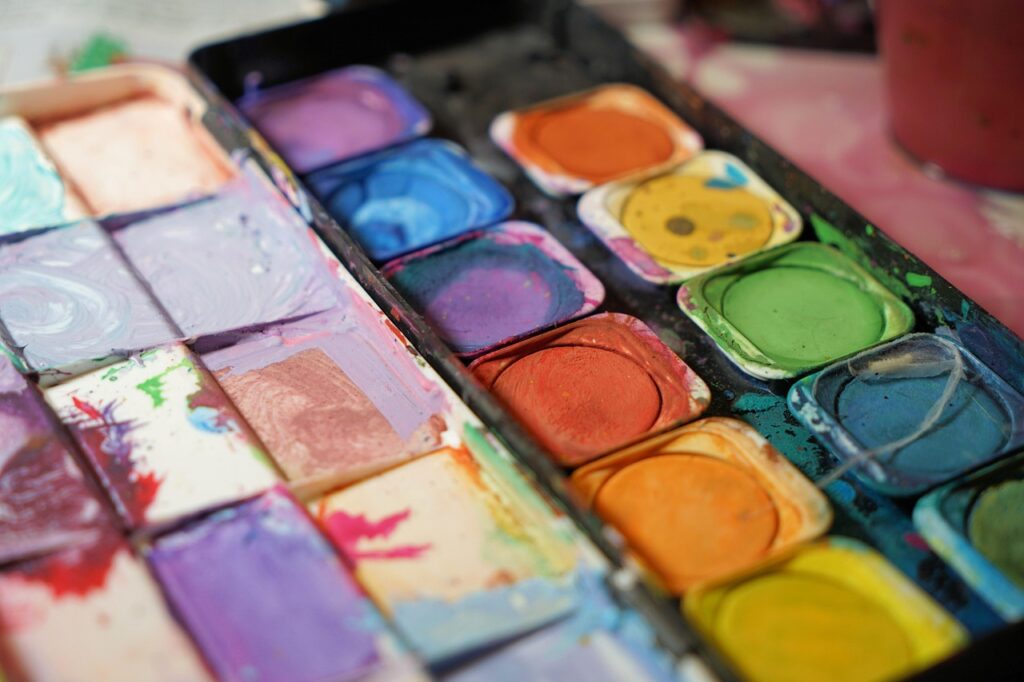In the world of automotive ownership, the excitement of choosing a new vehicle often revolves around make, model, features, and of course, color. While personal preference undoubtedly plays a significant role in this decision, a recent comprehensive study by iSeeCars.com reveals that the exterior paint color of a car is far more than a mere aesthetic choice; it can profoundly impact its resale value years down the road.
Understanding how different colors affect depreciation is crucial for any savvy consumer looking to make an informed purchasing decision. This research, based on an analysis of over 1.2 million 3-year-old used cars, provides factual, evidence-based insights into which colors are financial assets and which might turn out to be liabilities when it’s time to sell. The overall average vehicle loses 31.0% ($14,360) of its value after three years, but the range of depreciation across colors can mean a difference of over $5,000, underscoring the monetary weight of this seemingly simple decision.
While mainstream colors like white, black, and silver dominate the market, accounting for more than three-quarters of all new models sold, the study highlights a surprising truth: rarity often translates to higher retained value. “Yellow and orange have been among the best colors for retained value since iSeeCars began tracking depreciation by color,” notes iSeeCars Executive Analyst Karl Brauer. This counter-intuitive finding suggests that a smaller supply meeting a specific demand can create a premium in the used market, challenging the assumption that universally popular colors automatically equate to better resale. Let’s dive into the colors that defy the average and stand out for their exceptional value retention.

1. **Yellow: The Unsung Hero of Value Retention**
Yellow cars consistently emerge as the champions of value retention in the used car market, a finding that might surprise many. While not a color with widespread appeal, its scarcity combined with a dedicated demand creates a unique market dynamic. The iSeeCars study found that yellow cars lose only 24.0% ($13,667) of their value after three years, significantly outperforming the overall average depreciation of 31.0%.
This outstanding performance means a yellow car can effectively save its owner approximately $693 compared to the market average over a three-year period. Karl Brauer explains this phenomenon: “Yellow is among the least popular car colors with the lowest vehicle share and is commonly a color for sports cars and other low-volume vehicles that hold their value relatively well.” He adds, “Because yellow vehicles are so novel in the secondhand marketplace, people are willing to pay a premium for them.”
Across specific segments, yellow’s dominance is equally impressive. It ranks as the most valuable color for both convertibles and SUVs, and the second best for sedans and coupes. For convertibles, yellow cars only depreciate by 21.4% ($15,651), and for coupes, they show an even lower depreciation of 14.5% ($13,401). Even for SUVs, a yellow vehicle only loses 30.2% ($14,460) of its value, which is better than the segment average of 32.7%. Its consistent top-tier performance across varied segments and metro areas, where it uniformly shows the lowest depreciation, solidifies its position as a top choice for value retention.

2. **Orange: High-Performance and High Value**
Following closely behind yellow, orange vehicles also demonstrate remarkable value retention. The study indicates that orange cars depreciate by just 24.4% ($9,951) over three years, making them one of the best colors for holding value. This strong performance, much like yellow, is largely attributable to the principles of supply and demand, where limited availability meets a specific, enthusiastic buyer base.
Orange has carved out a niche for itself, particularly within the high-performance truck segment. It has “become almost the default color for high-performance trucks, with both Ford and Toyota offering it on Raptor and TRD Trims,” according to the research. This strategic use by manufacturers to signify performance and exclusivity plays a significant role in its elevated resale value. With only 0.4% of trucks produced in this color, “orange ends up as the best color for retained truck value because more people want it compared to the number available in the used market.”
Beyond trucks, orange also shines in other segments. For SUVs, it leads the pack with only 27.1% ($11,610) depreciation. Coupes painted orange depreciate by a mere 18.4% ($10,058), and convertibles by 19.8% ($15,625), both significantly outperforming their segment averages. Karl Brauer reiterates, “Orange isn’t a color with widespread appeal, but because multiple brands use it to represent high-performance models, including the Ford F-150 Raptor and Toyota Tacoma TRD Pro, it’s gained favor with truck buyers,” and it’s clear this favor extends to the used market.

3. **Green: A Mixed Bag of Depreciation**
Green cars present a more nuanced picture when it comes to value retention, often performing exceptionally well in some segments while struggling in others. Overall, green vehicles lose 26.3% ($13,152) of their value after three years, placing them third among the best-retaining colors across the entire market. This suggests that, on average, green is a good choice for minimizing depreciation.
However, the segment-specific data reveals significant variations. For minivans, green is an outstanding performer, with a depreciation rate of just 15.3% ($7,145), making it the top color for this segment. Similarly, for pickup trucks, green performs very well, with a 19.3% ($9,268) depreciation rate. SUVs also see green as a strong contender, with a 28.8% ($15,687) depreciation, placing it as the second-best color for value retention in that category. This varied performance highlights that the context of the vehicle type is critical.
Conversely, green fares poorly in the sedan market, where it ranks as the second-worst color for value retention, losing a substantial 33.8% ($19,653) of its value. This stark contrast led Brauer to comment, “Apparently used sedan buyers don’t appreciate a green vehicle. New car buyers should keep this in mind when ordering their next sedan.” For coupes and convertibles, green also shows higher depreciation rates than its yellow and orange counterparts, at 25.4% ($15,190) and 27.4% ($20,555) respectively. Thus, while green can be a smart choice for some, it’s essential for buyers to consider the specific vehicle segment.

4. **Beige: A Quiet Achiever in Resale**
Often overlooked in discussions about car colors, beige holds its own as an above-average performer in value retention. The iSeeCars study shows that beige cars depreciate by 29.5% ($18,455) after three years. While not as flashy as yellow or orange, beige quietly outperforms the overall average depreciation rate of 31.0%, proving that understated colors can also be financially savvy choices.
Beige’s strength is particularly evident in specific vehicle categories. For pickup trucks, beige, despite being worse than average for the segment overall, still appears on some lists. However, a more comprehensive analysis indicates beige is ranked well for overall value. In the sedan segment, beige is a strong performer, coming in as the third-best color with a depreciation rate of 27.8% ($12,401). This highlights its appeal to a segment of buyers who may prioritize practicality and a subdued aesthetic, which can translate into solid resale values.
For SUVs, beige also retains value relatively well, depreciating by 30.7% ($21,921), placing it fourth in the segment’s color rankings, ahead of the SUV average. The consistent, if not spectacular, performance of beige across multiple segments suggests it’s a dependable choice for those who prefer a neutral palette but still want to protect their investment. Its ability to retain value above the market average indicates a steady demand that ensures it doesn’t suffer the steep drops associated with less desirable or overly common shades.

5. **Red: A Popular Choice with Consistent Returns**
Red is a perennially popular car color, often associated with sportiness and passion. In terms of value retention, it generally performs quite respectably, sitting comfortably above the overall market average. The study reveals that red cars depreciate by 29.8% ($13,013) over a three-year period, making it a safe and smart choice for many car buyers. This rate is better than the average, suggesting that red’s widespread appeal does translate to decent resale value.
Red’s performance varies across different vehicle types, but it generally maintains a strong showing. For minivans, red cars lose 30.5% ($14,715) of their value, which is better than the segment average of 40.9%. Coupes in red depreciate by 21.1% ($11,437), again outperforming the coupe average. Even for SUVs and sedans, red holds its own, with depreciation rates of 31.4% ($14,092) and 28.3% ($10,640) respectively, both showing better-than-average retention within their categories.
Despite its popularity, red doesn’t suffer the same severe depreciation as other common colors like black or white. This could be due to its enduring appeal and its ability to lend a distinct character to a vehicle without being overly niche. “Reds and blues are often safe bets,” the context notes, implying a broad, consistent demand. This balanced performance makes red a reliable choice for consumers who desire a vibrant color without taking a significant hit on resale value.
Read more about: 12 Actors From the Electrifying 1960s Who Seemed to Vanish From Hollywood’s Limelight

6. **Silver: The Practical Performer**
Silver has long been a staple on roadways, admired for its versatility and perceived ease of maintenance. The iSeeCars study confirms its solid standing in value retention, with silver cars depreciating by 29.8% ($12,636) over three years. This places it among the colors that perform better than the overall market average, suggesting that its popularity and practical advantages contribute positively to its resale value.
Silver’s appeal extends across various segments, where it consistently provides above-average value retention. For sedans, silver cars depreciate by 28.0% ($9,500), outperforming the sedan average. In the truck segment, silver trucks lose 27.0% ($14,256) of their value, which is better than the truck average of 27.1%. Even minivans see silver performing well, with a 29.2% ($13,648) depreciation, significantly better than the minivan average.
While silver might not command the premium of a rare yellow or orange, its broad acceptance and reputation for hiding dirt and imperfections contribute to its steady demand in the used market. “Like gray, silver hides dust and dirt longer. They also tend to hide mud buildup near the rocker panels of cars,” a practical benefit that likely resonates with buyers. This combination of widespread appeal, practicality, and consistent performance makes silver a dependable choice for those prioritizing a sensible and stable investment in their vehicle’s color.
Continuing our exploration into how car color influences a vehicle’s financial trajectory, we now turn our attention to the colors that tend to see more significant depreciation. While personal preference will always be a factor in vehicle choice, understanding the market’s response to different shades can empower consumers to make more informed decisions, potentially saving thousands of dollars down the road. This next set of colors, according to the iSeeCars study, generally fall below the overall market average for value retention or present unique considerations for buyers.

7. **Brown: The Unconventional Contender**
Brown cars, often considered a less conventional choice, position themselves slightly above the overall market average when it comes to value retention. The iSeeCars study indicates that brown vehicles depreciate by 30.4% ($14,197) over three years, which is a marginally better performance than the overall average depreciation of 31.0%. This suggests that despite its niche appeal, brown holds its value more consistently than some of its more popular counterparts.
Its performance, however, is not uniform across all vehicle segments. For pickup trucks, brown is listed among the colors that are better-than-average for retained value, showcasing a depreciation rate of 25.9% ($14,366). Similarly, minivans in brown demonstrate strong value retention, with a depreciation rate of just 21.3% ($9,826), making it the second-best color for this segment. This indicates that for certain utilitarian vehicle types, brown can be a surprisingly stable investment.
Conversely, brown sedans experience a higher depreciation rate of 31.9% ($11,056), placing them toward the bottom for that segment. For SUVs, brown cars depreciate by 33.4% ($17,347). This mixed performance underscores the importance of considering the specific vehicle type when opting for a brown finish. While it might not be a top-tier choice for every segment, its overall above-average retention rate signals a steady, albeit quieter, demand in the used market.

8. **Gray: The Steadfast and Practical Choice**
Gray cars, much like their silver counterparts, embody practicality and widespread appeal, contributing to their solid value retention. The iSeeCars study found that gray vehicles depreciate by 30.5% ($13,648) over three years, performing just above the overall market average of 31.0%. This consistent performance reinforces gray’s standing as a reliable option for consumers prioritizing resale value.
Gray demonstrates a robust presence across several vehicle segments. For pickup trucks, gray vehicles depreciate by 24.5% ($11,777), securing its position as the third-best color for value retention in that category. Sedans painted gray lose 29.3% ($11,579) of their value, which is better than the sedan average. For coupes, gray shows a strong depreciation rate of 21.2% ($12,233), and for convertibles, 31.1% ($24,328), both outperforming their respective segment averages.
Beyond its strong financial performance, gray offers significant practical benefits. It is widely considered one of the easiest colors to keep clean, effectively hiding dirt and dust, and making it look presentable for longer periods. This ease of maintenance is a substantial draw for used car buyers, who appreciate a vehicle that requires less frequent cleaning to maintain its aesthetic appeal. The combination of solid depreciation figures and practical advantages makes gray an unequivocally smart choice for value-conscious buyers.
Read more about: The 13 Most Beautiful Sports Cars Ever Designed: A Masterclass in Automotive Art and Engineering
9. **Blue: The Broadly Appealing Yet Tricky Hue**
Blue cars often strike a balance between mainstream acceptance and a touch of individuality, making them a generally safe, though not exceptional, bet for value retention. The iSeeCars study indicates that blue vehicles depreciate by 30.9% ($13,994) after three years, a rate that is marginally better than the overall market average of 31.0%. This puts blue in a similar category to red, often cited as a “safe bet” by industry experts.
Blue’s performance across segments reveals a varied landscape. For pickup trucks, blue is an above-average performer, depreciating by 26.2% ($13,910). Minivans in blue, however, show a higher depreciation of 36.4% ($17,967), though this is still better than the segment average. Blue shines particularly bright in the coupe and convertible segments, with depreciation rates of 19.0% ($11,530) and 29.3% ($22,394) respectively, outperforming most other colors in these categories that reward brighter hues.
However, the allure of blue comes with a notable drawback: maintenance. Despite its popularity, blue is considered one of the harder colors to keep clean. It tends to reveal water spots easily, and scratches or swirl marks can become quickly apparent, detracting from the vehicle’s pristine appearance. This practical consideration means that while blue might appeal aesthetically, owners should be prepared for more diligent cleaning efforts to maintain its visual appeal and, by extension, its potential resale desirability.

10. **Black: The Classic Look with a Hidden Cost**
Black cars, a perennial favorite often associated with sophistication and power, present a challenging picture for value retention. The iSeeCars study places black among the colors that depreciate more significantly, losing 31.9% ($15,381) of its value over three years, which is worse than the overall market average of 31.0%. This substantial depreciation means black cars typically shed over $15,000 in value, making it a less optimal choice from a purely financial standpoint.
The reason for this accelerated depreciation lies in its very popularity. As one of the most common car colors, black accounts for a significant portion of new models sold. While this widespread appeal might seem advantageous, it translates to a saturated used market. With an abundance of black vehicles available, buyers have ample choice, driving down prices and diminishing the distinctiveness that can command a premium. Karl Brauer of iSeeCars notes, “White and black are the two most common car colors… But it also means those colors provide zero distinction in the used market, reducing their value and making it easy for buyers to shop around for the lowest-priced model in these shades.”
Segment-specific data further illustrates black’s struggle. It ranks as the worst color for SUVs with a depreciation of 33.6% ($17,411) and for minivans at 42.4% ($20,445). For pickup trucks, black performs worse than the segment average at 28.2% ($15,332). In sedans and coupes, it’s also a bottom-tier performer, depreciating by 30.0% ($12,046) and 24.9% ($13,179) respectively. Even convertibles see black as a high-depreciation option at 33.7% ($24,345).
Beyond depreciation, black cars pose practical challenges. They are notoriously difficult to keep clean, showing every speck of pollen, dust, and dirt almost immediately after a wash. Furthermore, safety statistics suggest black vehicles have a higher accident risk compared to lighter colors, with a 12% higher risk relative to white cars. Therefore, while black offers undeniable aesthetic appeal, consumers should weigh these financial, maintenance, and safety factors carefully when making their color selection.

11. **White: The Popular Choice with Average Returns**
White stands as the undisputed champion of popularity in the automotive world, being the most common car color globally, particularly in North America where it accounts for roughly 34% of sales. However, this ubiquity, much like black, contributes to its slightly below-average performance in value retention. The iSeeCars study found that white cars depreciate by 32.1% ($15,557) over three years, making it another color that typically loses over $15,000 in value, surpassing the overall average depreciation.
The sheer volume of white vehicles on the market dictates this trend. While many buyers are drawn to white’s clean aesthetic, its commonality means it offers little unique selling proposition in the used car market. As Karl Brauer explains, the abundance of white cars allows buyers to easily compare and choose the lowest-priced model, thus depressing resale values across the board for this shade. It’s a testament to the power of supply and demand, even for universally appealing colors.
Segment-wise, white consistently appears among the lower-ranked colors for value retention. It’s the worst color for minivans, depreciating by a significant 43.9% ($21,087). For SUVs, it’s near the bottom at 33.2% ($17,126), and for sedans, it loses 31.7% ($13,254) of its value. Pickup trucks in white also perform worse than their segment average, depreciating by 28.3% ($14,785). Even coupes and convertibles see white among their highest depreciating options at 25.8% ($14,172) and 33.5% ($24,082) respectively.
From a practical standpoint, white cars offer mixed blessings. While they do tend to show mud and splashes more readily than gray or silver, white is excellent at hiding swirl marks from automatic car washes and generally looks newer for longer periods. More importantly, white vehicles are statistically safer; research indicates a 12% lesser chance of accident involvement compared to black vehicles, making them highly visible in all conditions. Therefore, while white may not be the best financial choice for resale, its safety and long-term aesthetic benefits are significant considerations.
12. **Gold: The Bold Statement with the Highest Cost**
Gold cars unequivocally claim the top spot for the highest depreciation among all colors studied, making them the riskiest choice for consumers focused on value retention. The iSeeCars study reveals that gold vehicles lose a substantial 34.4% ($16,679) of their value after three years. This figure is significantly worse than the overall market average of 31.0%, effectively costing owners an additional $2,319 compared to a market-average colored car.
This steep depreciation is a direct consequence of gold’s highly niche appeal. While it certainly makes a bold statement, its unconventional nature means a much smaller pool of potential buyers in the used car market. As Karl Brauer noted regarding unique colors, “Rarity alone does not equal value. If a color doesn’t resonate with enough used car shoppers it will hurt resale value, even if it’s uncommon.” Gold embodies this principle perfectly, as it does not garner sufficient demand to offset its scarcity.
In specific segments, gold’s performance is particularly poor. For sedans, it ranks as the absolute worst color for value retention, depreciating by a staggering 37.9% ($15,958). For SUVs, it sits in the middle of the pack but still loses a high 31.4% ($18,498) of its value. The context mentions that gold, along with purple, yellow, and orange, are colors dealers are least likely to keep in stock, further emphasizing its limited market draw. While some buyers who choose gold may keep their vehicles for a long time due to a strong personal connection, this sentiment does not translate into strong resale value.
Gold cars also share maintenance challenges with other bright or dark hues, particularly in showing mud splashes. Ultimately, choosing a gold vehicle means embracing a significant financial penalty in terms of depreciation. It is a color for those who prioritize making a unique statement above all else, and are fully prepared for the substantial impact on their vehicle’s eventual resale worth.
### Making Your Color Choice: A Balanced Approach
As this comprehensive analysis by iSeeCars.com clearly demonstrates, the color of your car is much more than a cosmetic detail; it is a critical factor that can significantly impact its financial performance over time. From the unexpected champions of value retention like yellow and orange to the high-depreciation risks of gold, black, and white, understanding these dynamics is paramount for any savvy car buyer.
Read more about: Beyond Nostalgia: 14 Classic ‘Boomer’ Cars Gen Z Drivers Are Steering Clear Of (And Why!)
While personal preference will always play a role, making an informed decision involves balancing aesthetic desires with practical considerations such as depreciation, ease of maintenance, and even accident risk. Opting for less common, yet desirable, colors in certain segments can offer surprising returns, while even popular shades can carry hidden costs due to market saturation. Ultimately, protecting your automotive investment means looking beyond the showroom shine and making a color choice that aligns with both your taste and your financial objectives.






